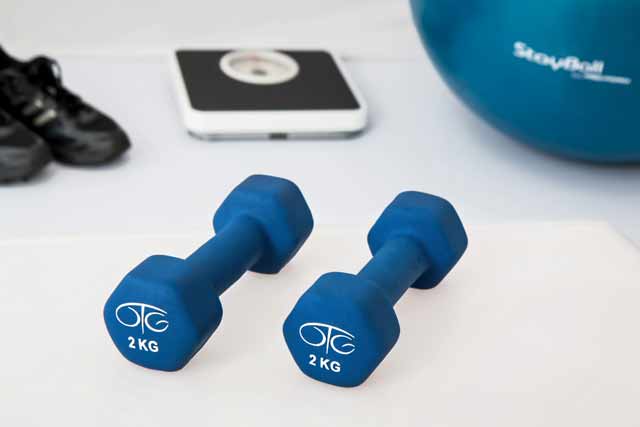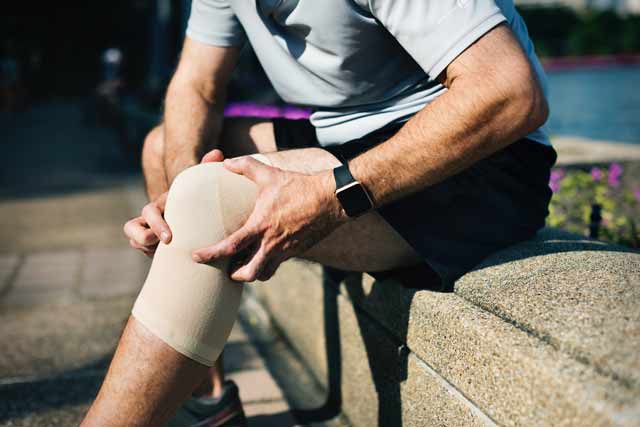When chronic pain gets you down, it can be difficult to brush yourself off and try again. Especially when you have rheumatoid arthritis, you might have some days that are hard to handle. The stiff joints and sore muscles might have you rethinking any form of exercise. However, by incorporating some specific exercises into your daily routine, you might find you have more good days than not.
Here are some great exercises to try if you have rheumatoid arthritis.
Cardio
Doing any aerobic exercise that increases your heart rate is great for your health. Keeping your heart healthy and controlling your weight is essentially when also dealing with rheumatoid arthritis.
Consider opting for low impact exercises, such as rowing, biking or walking. This will help keep pressure off your joints, but also get that heart rate pumping. You can start slowly with just 10-15 minutes of an activity and work your way up to 30-45 minutes.
If you happen to be on any additional medications, especially for your blood pressure, be sure to consult with your doctor before starting any rigorous exercise plan.
Yoga
The best thing about practicing yoga is that it is an exercise for all ages and abilities. Practicing yoga while having rheumatoid arthritis can really increase your range of motion. You will notice your joints and muscles relaxing while your flexibility improving over time.
Even just simple stretching can improve your joint stiffness. Holding stretches for 10-30 seconds will help you gain more confidence in trying yoga poses and workouts.
Tai Chi
Another great low impact exercise for your rheumatoid arthritis is Tai Chi. This ancient Chinese practice focuses heavily on energy flow and balance. It also incorporates breathing exercises and movements done at your pace. You can work to improve your range of motion, fight fatigue and increase your flexibility.

Strength Training
Rheumatoid arthritis does not mean you will always be weak. You CAN build muscle through proper strength training and counter muscle loss that you might have already suffered from. There’s even evidence to suggest that weight lifting with rheumatoid arthritis can reduce swelling, stiffness and pain. The proper way to move forward with strength training is to start small, take the advice of a personal trainer and follow your doctor’s orders. You can build muscle by just using your own body weight and resistance bands.
Water Therapy
By taking the plunge into the water, you can really make waves with your rheumatoid arthritis. Hydrotherapy can do wonders for your pain and joint stiffness. The beauty in the pool is the weightlessness you feel, which allows you to do some exercises you might otherwise not be able to perform on land.
It has also been suggested that warm water can help reduce swelling and improve mobility. Head to warm waters to improve blood flow to your joints and release tension.
Group Exercise
Finding a community of people who also have rheumatoid arthritis might be a great way to exercise with like minded folks. To get started, check out the Arthritis Foundation Exercise Program. This program will get you in touch with other people looking for range of motion and endurance building activities. Beyond these activities, AFEP also offers relaxation techniques and health education topics.
Another group, Active Living Everyday (ALED) works to get sedentary people up and moving. Walk With Ease is another group based exercise community. And if you are looking for an aquatic based community, the Arthritis Foundation Aquatic Program might be right up your alley.
Rest
And finally, remember to rest. Rheumatoid arthritis also requires plenty of rest once you add in your exercise program. A good balance of rest, relaxation and exercise will help manage your symptoms at the optimum level possible. When you are feeling good, get the proper exercise in, but if your body or joints are very painful, use the time to rest and relax.

Bottom Line
Exercise should be an important part of your life if you are living with rheumatoid arthritis. After consulting with your doctor, you should find the exercise you are most comfortable with and the one that works for you. You may find that you need that community to keep you on your toes or that you need a personal trainer to keep you motivated. Whatever you choose, be consistent and rest when necessary.
Comments are closed.
